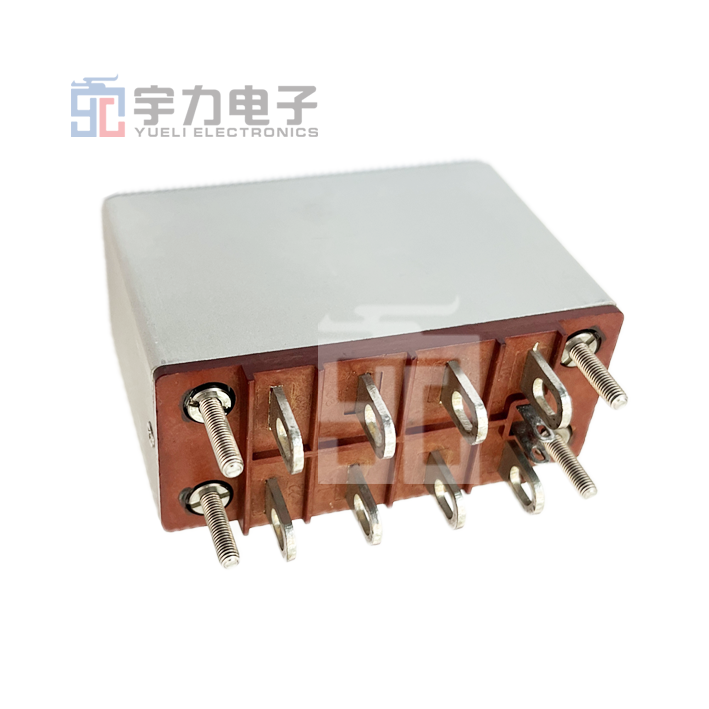Understanding the Functionality of Polarized Relays in Electronics
2025-06-06

Understanding the Functionality of Polarized Relays in Electronics
Table of Contents
- What Are Polarized Relays?
- How Do Polarized Relays Work?
- Key Components of Polarized Relays
- Types of Polarized Relays
- Applications of Polarized Relays in Electronics
- Advantages of Using Polarized Relays
- Challenges and Limitations of Polarized Relays
- The Future of Polarized Relays in Electronics
- Frequently Asked Questions
What Are Polarized Relays?
Polarized relays are specialized electromagnetic devices that control the flow of electrical current in a circuit. Distinguished from regular relays, polarized relays utilize a permanent magnet to maintain a specific position of the armature, allowing them to remain in either an energized or de-energized state without continual power supply. This unique feature provides enhanced reliability and efficiency in various electronic applications.
How Do Polarized Relays Work?
The operation of polarized relays is based on electromagnetic principles. When a voltage is applied to the coil, it creates a magnetic field that interacts with the permanent magnet. This interaction moves the armature, switching the relay's state. The armature remains latched in position until the coil is de-energized, making polarized relays ideal for applications requiring stable switching without constant power.
Electromagnetic Principles Behind Polarized Relays
The basic functionality of polarized relays hinges on Faraday's law of electromagnetic induction, which states that a changing magnetic field induces an electromotive force (EMF) in a conductor. By strategically placing the permanent magnet and coil, the design ensures the armature's engagement and disengagement are both swift and reliable.
Sequential Switching Mechanism
In more complex configurations, multiple polarized relays can be utilized to create sequential switching circuits. This means that the state of one relay can affect the operation of another, allowing for sophisticated control systems in large electronic devices.
Key Components of Polarized Relays
Understanding the key components of polarized relays is essential for grasping their functionality. The principal parts include:
- Coil: The electromagnetic coil that activates the relay when voltage is applied.
- Armature: The movable component that shifts position when acted upon by the magnetic field.
- Permanent Magnet: Provides a constant magnetic field, crucial for the relay's operation.
- Contacts: Metal components that open or close the circuit based on the armature's position.
Types of Polarized Relays
Polarized relays can be classified into several types based on their design and operational characteristics. These include:
1. Single-Pole Single-Throw (SPST) Polarized Relays
These relays have one input and one output, making them suitable for basic on/off control applications.
2. Single-Pole Double-Throw (SPDT) Polarized Relays
SPDT relays provide two output paths, allowing for more versatile circuit designs. They are commonly used in applications where alternating current (AC) or direct current (DC) paths need to be switched.
3. Double-Pole Double-Throw (DPDT) Polarized Relays
DPDT relays feature two input and output paths, enabling complex switching operations in advanced electronic systems.
Applications of Polarized Relays in Electronics
Polarized relays find their applications across diverse fields in electronics due to their reliability and efficiency. Key areas include:
1. Automotive Systems
In automotive applications, polarized relays control various functions such as lighting, ignition systems, and power distribution, enhancing vehicle safety and functionality.
2. Industrial Automation
Manufacturing processes often utilize polarized relays for controlling machinery, ensuring precise operations and improving production efficiency.
3. Home Appliances
Many household devices, including washing machines and refrigerators, incorporate polarized relays to manage power and operational states effectively.
4. Telecommunications
In telecom systems, polarized relays ensure reliability in signal routing and power management, catering to the demands of modern communication infrastructure.
Advantages of Using Polarized Relays
Utilizing polarized relays offers several significant benefits, including:
1. Enhanced Stability
Once energized, polarized relays maintain their position without requiring continuous power, minimizing energy consumption and improving longevity.
2. High Reliability
The mechanical design of polarized relays leads to lower wear and tear, which translates to enhanced reliability over time.
3. Simplified Circuit Design
Polarized relays can simplify circuit designs by offering latching capabilities, reducing the need for additional components.
Challenges and Limitations of Polarized Relays
Despite the numerous advantages, polarized relays also face specific challenges:
1. Size Constraints
Polarized relays can be bulkier than their non-polarized counterparts, making them less suitable for compact electronic designs.
2. Cost Factors
The complexity in design may lead to higher manufacturing costs compared to simpler relay types, which can impact budget considerations.
The Future of Polarized Relays in Electronics
As technology continues to advance, the demand for efficient and reliable components like polarized relays is expected to grow. Innovations such as miniaturization and the integration of smart technology could enhance their application in modern electronics.
Frequently Asked Questions
1. What is the difference between polarized and non-polarized relays?
Polarized relays use a permanent magnet to maintain their state, whereas non-polarized relays do not, requiring continuous power to remain activated.
2. Can polarized relays be used in DC circuits?
Yes, polarized relays are suitable for both DC and AC circuits, making them versatile for various applications.
3. What are the common issues with polarized relays?
Common issues include size constraints and potential higher costs compared to non-polarized relays.
4. How do I choose the right polarized relay for my project?
Consider factors such as voltage ratings, current capacity, and specific application requirements when selecting a polarized relay.
5. Are polarized relays more energy-efficient than non-polarized ones?
Yes, polarized relays tend to be more energy-efficient since they maintain their state with less power consumption.
Conclusion
Polarized relays are indispensable components in modern electronics, enabling efficient and reliable control of electrical circuits. By understanding their functionality, advantages, and applications, we can harness their potential in various industries—from automotive systems to telecommunications. As we advance further into the future of electronics, polarized relays will undoubtedly play a crucial role in shaping innovative technologies that enhance our daily lives.


